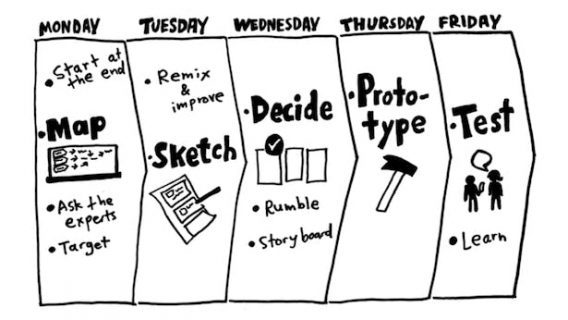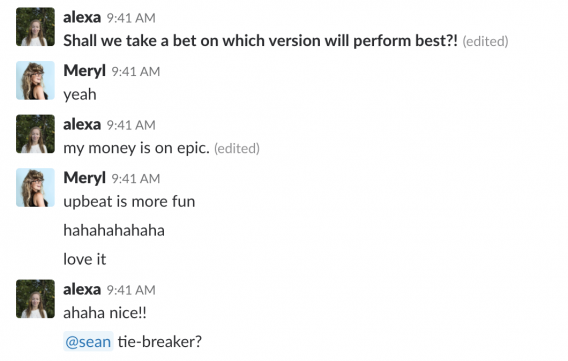Plenty of us have witnessed a marketing campaign gone wrong. Remember that recent Pepsi commercial featuring Kendall Jenner trying to settle a Black Lives Matter protest with a can of Pepsi? I just remember thinking (as I gagged), “How did that actually make it to market?!”
Yet despite some major fails, marketing continues to be the differentiator that sets a brand apart within a crowded market.
Table of contents
Look at Nike. In stark contrast to Pepsi, Nike’s Colin Kaepernick campaign will likely go down as one of the most impactful pieces of marketing in recent history.
https://twitter.com/Kaepernick7/status/1037387722107830272?s=19
Or look at MailChimp, a startup-turned-$400-million-revenue-machine that is always creating viral campaigns that set them above their competition, like this recent “Did You Mean Mailchimp” one.

Recently, I designed a strategic marketing campaign for a company called Help Scout—a helpdesk software tool. Like Nike and MailChimp, Help Scout is in a crowded market; my campaign helped them stand out.
Three strategies for creating marketing campaigns that stand out
Whether you’re executing a quick n’ dirty one-off promotion or a full-fledged multi-channel strategy, here are three strategies for creating marketing campaigns that stand out.
Strategy #1: Ask The Experts.
In the book Sprint: How to Solve Big Problems and Test New Ideas in Just Five Days, Jake Knapp and the partners at Google Ventures outline a process for delivering data-driven, research-backed projects.
They advocate using testing to learn about your market—rather than spending days (or months) conducting research before ever getting a test out the door.
Within the week-long process, one of the first steps they outline for a successful launch—and one that I use when crafting every marketing campaign—is to Ask the Experts.

As the authors describe them, Ask the Experts sessions are “a series of one-at-a-time interviews with people from your sprint team, from around your company, and possibly even an outsider or two with special knowledge.”
These sessions help you incorporate as many sources of information as possible into your campaign. When paired with other research (like customer surveys, personas, interviews, and competitive research), they can be a powerful value-add to your campaign.
Typically, a session will run for one hour, and the questions I like to ask when conducting a session are:
- What are 1–3 benefits of this product, service, or business?
- What do you think are the challenges I’ll face/need to solve for when creating this campaign?
- Any special advice/things I should consider when crafting this campaign?
Selecting the experts for your interviews is never easy. My advice is to seek out those with the most knowledge of the theme, feature, product, or concept of your campaign. From there, select experts across disciplines who might provide an idea or thought that you wouldn’t necessarily come to on your own.
For the campaign to launch Help Scout’s new live chat tool, Beacon, I conducted six, one-hour Ask the Experts sessions with stakeholders across the company.
Here were the common answers I received to the above questions:
| Question | Answers (Combined) |
|---|---|
|
|
|
|
|
|
What I discovered from the Ask the Experts sessions is that the live chat tool aims to scale, humanize, and simplify customer service. But to communicate those benefits to the wider public, the campaign messaging also needed to tackle internal perceptions that live chat increases customer expectations and support ticket volume.
I would have expected that the (intentional) lack of proactive messaging—a feature that lets you ping customers before they start a new chat—would have been a top concern. That’s because I’m a marketer and see the value of proactive messaging for driving sales.
But when it comes to customer service professionals, their core motivation is much different. Providing reactive support in a timely manner to meet customer expectations is a higher concern.
Ask the Experts was a critical method to broaden my understanding of needs on both sides of a product launch—a key to making sure my campaign didn’t promise an experience that Help Scout couldn’t deliver. Those sessions also reinforced another key component of the campaign: a design-led approach.
Strategy #2: Lead with the creative, not with the goals.
You might have noticed that another piece of advice I received during the Ask the Experts sessions was to “lead with the creative, not with the goals.”
That’s because Help Scout considers itself a design-led company. Design-led companies, as McKinsey notes, recognize that, increasingly:
customers prioritize the experience of buying and using a product over the performance of the product itself. In fact, customer experience is becoming a key source of competitive advantage as companies look to transform how they do business.
A focus on experiential design has four key factors:
- Really understanding the customer. Going beyond what customers want to find out why they want it.
- Bringing empathy to the organization. Making sure that a design lead is involved in high-level, strategic decisions, not just tactical implementation.
- Designing in real time. Ensuring that design is present during product development and has a seat at the table when business or technology teams establish limiting parameters.
- Acting quickly. Product development is iterative—rapid prototyping, fast changes, continual improvement.
The design-led approach was a bet that Help Scout made in the early days. Help Scout invests in product design and branding to differentiate within a crowded market. Visitors, leads, conversions, and new customers are considered a byproduct of having an intuitive product and a strong brand story.
It’s a research-backed strategy, too. Findings from a 2016 study by Adobe and Forrester showed that companies that put design at the core of their business are better positioned to tackle rising customer expectations in an increasingly competitive digital landscape.
“Putting design at the core” is not mere theory or a job title tweak. As the study reported, compared to non-design-led companies, design-led companies:
- Spent more money on research and innovation.
- Had tools and systems in place to test ideas with consumers.
- Had a defined process for coming up with new digital consumer experience ideas.
- Enjoyed greater market share and customer loyalty.
Look at Ikea. The former head of design, Marcus Engman (the brains behind product suites like the 2017 maximalist tropical furniture and collabs with well-known furniture and textile designers, like Tom Dixon) is a huge proponent of a design-led approach.
In a recent interview with Fast Company, where Engman is described as having spent six years “making Ikea weird,” he explained:
I want to show there’s an alternative to marketing, which is actually design. And if you work with design and communications in the right way, that would be the best kind of marketing, without buying media.
It was no surprise that during the Ask the Experts sessions at Help Scout, everyone’s advice was to stay true to the company’s roots as a design-led brand and get weird (like Engman) to stand out.
And believe me, we got weird with it. After all, if you want to keep your customers coming back for more, what works better than bacon?
Here are the creative assets the team devised for the launch of Beacon live chat:
1. An attention-grabbing video (did someone say bacon?)
Props here go to Meryl Ayres, the incredibly talented video producer who conceived of and brought this hilarious story to light. Who doesn’t want to use bacon in a marketing campaign?!
2. GIFs and images for social media

3. An Instagram grid to really get the message across

4. Plus, a more “in-depth” look at the many reasons why bacon doesn’t “scale” as well as Beacon (so you should definitely use Beacon to delight customers, not bacon):
All Meryl.
Strategy #3: Get emotional.
Facebook’s 2018 algorithm update focused on community and personal engagements; content that is liked and shared within communities gets preferential treatment. And inciting an emotional response with your content increases engagement (likes, shares, views) on Facebook.
Music is a primary driver, or “cue,” for an emotional response. Think of any horror film you’ve ever seen. Most lose their scary tone as soon as you put them on mute.
For the Beacon > Bacon campaign, I leveraged the power of emotional advertising by conducting an A/B test on the type of music for 15-second Facebook video ads. We tested the video above with jazzy/upbeat music, against this one, with what we called the “epic” soundtrack:
The goal was simple: determine which musical version incited the highest engagement on Facebook and then use that version for the rest of the campaign. I ran the A/B test for one week to a 95% statistically relevant subset of the designated audience and dedicated $500 to each version.
While the test was running, the marketing team also took bets:


After one week, the results were clear: Sean and I should never make bets.

The jazzy/upbeat version performed better across the board with 3x the Leads, 2x the Reach, 2x the Impressions, and a Cost Per Result of $1.48 against $4.28 for the epic version.
Creating an emotional pull for a campaign doesn’t need to be subjective—accurate measurement that supports a valid A/B testing process can answer amorphous questions like, “Which background music generates more leads?”
Conclusion
The campaign launched in August, and results so far have been great. The campaign has generated 120,000 video views, 5,600 leads, and 275 new trial sign-ups for Help Scout.
That success has been the outcome of a design-led approach:
- We sourced ideas and concerns from stakeholders throughout the company.
- Put the consumer experience and brand above stale marketing metrics.
- Used a quantitative approach to drive an emotional response.
Interested in learning more about creating design-led marketing campaigns that’ll help your business stand out?
Join me in a webinar on January 9. You’ll get my framework for creating full-funnel marketing campaigns, including all the strategies, experiments, and tactics used in the Beacon > Bacon campaign.



